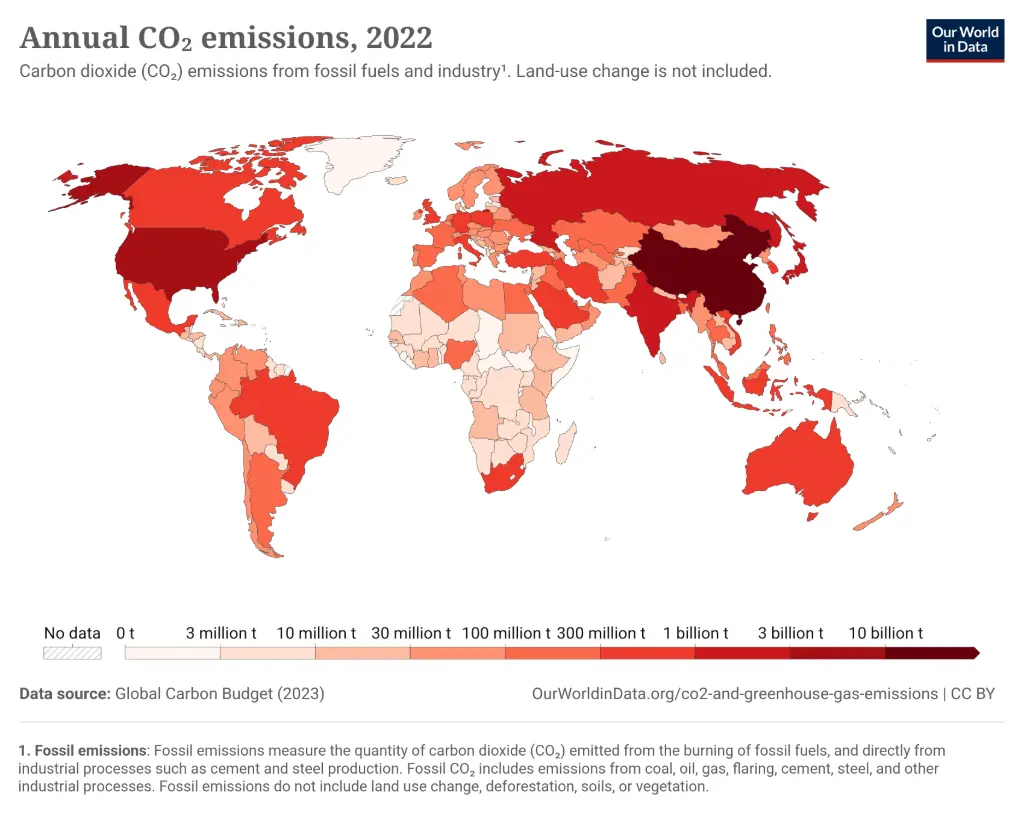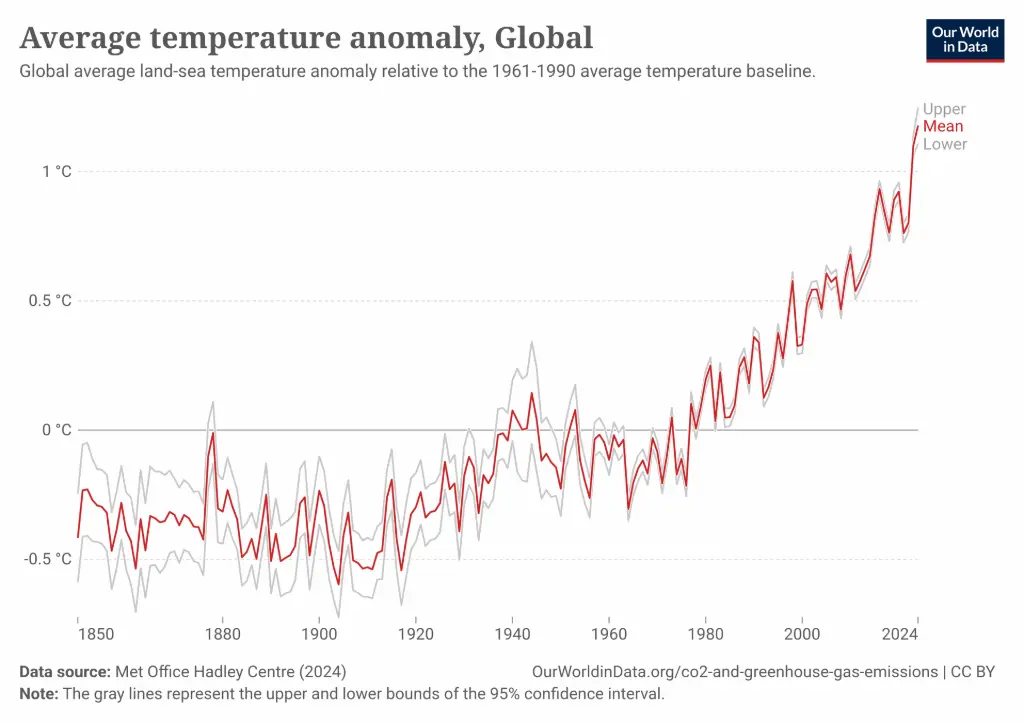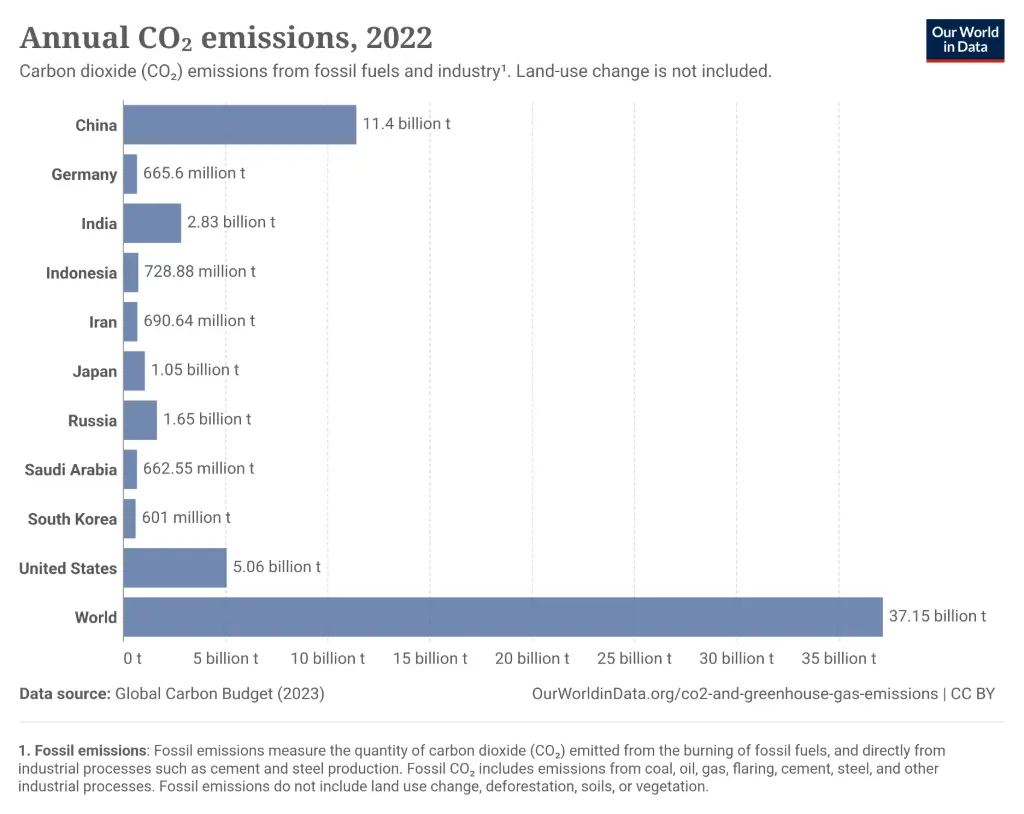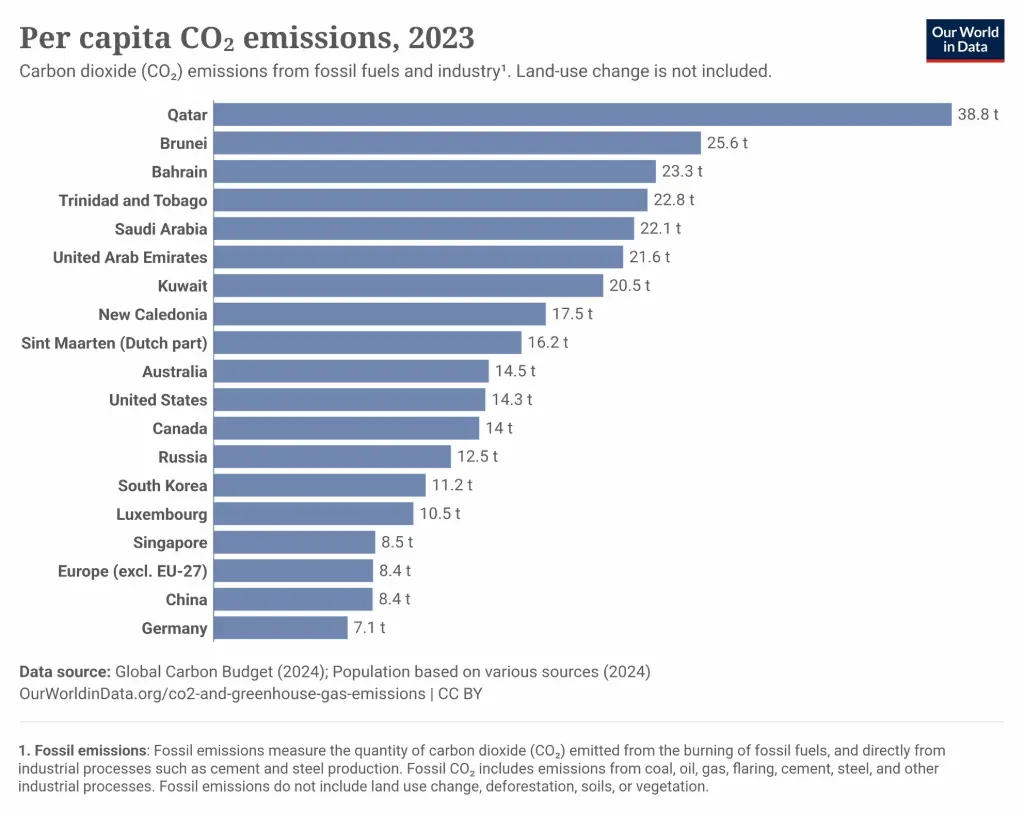Global CO2 Emissions: A Look at the Biggest Contributors

- Who is responsible for the world's carbon emissions?
- Who emits the most CO₂ today?
- Emissions throughout history
- CO₂ emissions per capita
- The relationship between wealth and emissions
- Why rich countries need to lead
- Impact of actions by rich countries
- Climate change is a global problem
Who is responsible for the world's carbon emissions?
We are releasing 53.85 billion tons of greenhouse gases per year, mainly in the form of carbon dioxide (CO₂), and this count keeps increasing!
The goal? Achieving carbon neutrality, of course! But here’s the dilemma:
Everyone agrees on the goal, but when it comes to splitting the bill, confusion starts.
Developed countries say they are doing their part, while emerging economies are labeled as the "villains" of emissions.
And the developing countries?
They argue that their emissions are a matter of survival, while Western emissions are just a lavish lifestyle.
So, the big question is:
Who really owns the responsibility for climate change?
Human greenhouse gas emissions have increased global average temperatures
This link between global temperatures and greenhouse gas concentrations – especially CO2 – has been true throughout Earth’s history.

Who emits the most CO₂ today?
In 2022, humans emitted 37.15 billion tons of CO₂.
- More than 50% of this came from Asia.
- North America and Europe: 18% and 17%, respectively.
- Africa, South America, and Oceania: together, only 8%.
The Biggest Emitters:
- China: 10 billion tons per year (27% of global emissions).
- USA: 15%.
- European Union: 10%.
These three blocks together account for more than half of the global CO₂ emissions. Without them, it's impossible to neutralize carbon or prevent severe climate change.
Other Major Emitters:

The top 10 countries together account for 75% of global emissions. But beware: looking only at current numbers doesn’t show the whole story.
The Big Difference?
The narrative that the developing world is the main driver of climate change doesn’t hold up if we look at historical facts.
Historical Emissions:
USA: They are the largest contributors to 25% of historical global emissions (around 400 billion tons), especially during the 20th century.
European Union: In second place, with 22% of the accumulated global emissions.
China: Drops to third place, with 13%, or half of the US total.
Other Historical Contributors:
India: Contributed only 3% of emissions throughout history.
Africa and South America: Also add up to 3% together.
United Kingdom: Although it emits only 1% of annual emissions today, its historical responsibility rises to 5%.
Germany: Contributes 2% of annual emissions today, but its historical impact is nearly 6%, equivalent to that of all of Africa and South America combined.
But Something is Missing:
Focusing only on countries mixes total emissions with population numbers.
Larger countries, of course, have higher total emissions, but what about per capita emissions?
CO₂ Emissions Per Person:
Each person emits an average of 5 tons of CO₂ per year, but this varies greatly from country to country.
Highest Per Capita Emitters:
- Qatar: 49 tons per person (2017).
- Trinidad and Tobago, Kuwait, United Arab Emirates, Brunei, Bahrain, Saudi Arabia: All among the highest emitters, due to dependence on oil and gas.
- Australia: 17 tons per person, over 3 times the global average.
- USA and Canada: 16 tons per person.
- Germany: 10 tons per person (double the global average).
- China: Although it is the largest emitter in absolute numbers, it emits 7 tons per person (slightly above the global average). China's large population, over 1.4 billion, dilutes its per capita emissions.

The Relationship Between Wealth and Emissions:
Historically, CO₂ emissions are linked to a high standard of living.
As countries grow richer, electricity, heating, transportation, technology, and other comforts increase, as does their carbon footprint.
China has significantly increased its emissions with the largest poverty reduction process ever seen.
The wealthiest half of the world is responsible for 86% of global emissions. The poorest half emits only 14%.
Unequal Impact of Climate Change:
Countries that contribute the least to the problem will be the most affected by climate change.
The developing world will face severe consequences such as food insecurity, resource conflicts, more intense natural disasters, and large movements of climate refugees.
Why Rich Countries Need to Lead?
These countries have the resources, a skilled workforce, and the technology needed to develop low-carbon solutions.
For developing nations to avoid dependency on fossil fuels, it is essential that low-carbon technology becomes accessible.
While the costs of renewable energy are decreasing, accelerating this transition is crucial.
The Impact of Actions by Wealthy Countries
When Western countries take the initiative to tackle climate change, there is a tendency for other nations to follow suit.
A notable case was the imposition of energy efficiency standards by the European Union, which influenced other countries to adopt similar practices.
Climate Change is a Global Problem
Climate change is an issue that cannot be resolved by a single country. The responsibility is complex and often causes divisions in international politics.
The justification that developed countries acted irresponsibly in the past should not be an excuse to repeat these mistakes.
Bibliography
Based on data and graphs from:
Hannah Ritchie, Pablo Rosado and Max Roser (2023) - “CO₂ and Greenhouse Gas Emissions” Published online at OurWorldinData.org. Retrieved from: 'https://ourworldindata.org/co2-and-greenhouse-gas-emissions' [Online Resource]
